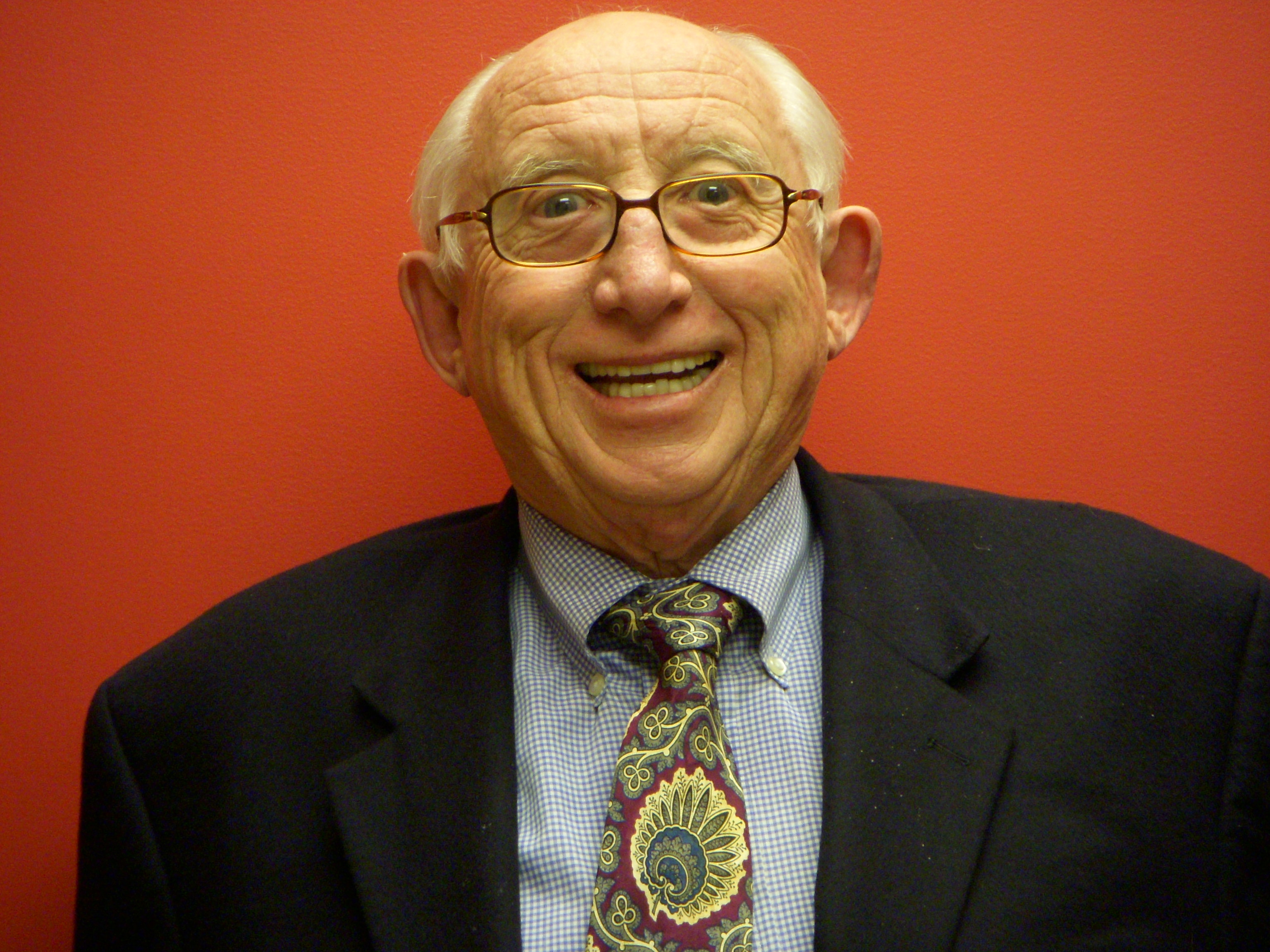A Drug Goes Down in a Perfect Storm

News Analysis With a Sense of Humor


In the end, as so often, it all came down to one person. In this case Chief Justice John Roberts. He sided with the liberals enough to save the basic provisions of the Affordable Care Act.
In the tumult the wailing and the sighing, the gentlest of gentle sighs, inaudible to all but those who know, comes from the permanently sick, just-alive people who suffer from the immune system disease known as Chronic Fatigue Syndrome, called Myalgic Encephalomyelitis in much of the world. This is a disease little understood and under-researched, which it is believed afflicts 1 million Americans.
It is a disease that has no mercy. It is almost without exception a life sentence, robbing the victim of normalcy. Its symptoms include total collapse after exertion, especially after exercise; sleep that does not refresh; periods of months or years of being bedridden with pain from bones “that feel as though they are exploding,” according one victim, Lynda Haight; and a mental fog that makes the simplest task, like paying bills, too difficult many days. Other symptoms include extreme sensitivity to light, noise and normal city and suburban noise.
To this community of the lost, this cohort of hopelessness, Obamacare is a blessing; a small blessing but one that may grow in time when a cure is found, or at least when a therapy which relieves the suffering is developed.
These are the very people — sick, voiceless and hidden in in plain view – who have been shunned by insurance companies.
Those patients who contracted the disease in childhood have never been able to get insurance. They are the quintessential preexisting condition demographic. No room at Hippocrates Inn for them, even if they can afford it. Others have been dropped when they reach lifetime limits embedded in many policies.
Sadly, most of the expenses of those living this zombie life spend money not on being cured but being tested and using off-label drugs (drugs that are used for a purpose other than that for which they have been certified) in an endless search for partial, temporary relief.
Marly Silverman, a patient activist and director of PANDORA, a coalition of Chronic Fatigue Syndrome groups, said that had the Supreme Court decided otherwise, patients with chronic disease would have been forced back to uninsurable limbo.
For now, the apparent saving of Obamacare is a mercy for all the lifetime diseases. But it has a particular meaning for CFS sufferers because there is no easy diagnosis of the disease, and the patients often look quite well. It is a cruel irony that many CFS patients do not show signs ofbeing sick, so they are accused of sloth and malingering when they are as sick as can be.
Which is where the power of one comes in.
Women tell stories about devoted husbands — maybe the most famous being author Laura Hillenbrand’s. Also there are loyal wives who take up the burden, as in the case of Courtney Miller of Nevada, who is crusading for recognition for the disease that afflicts her husband Robert.
In other cases, lovers and spouses have taken the exits, leaving the prostrate to the additional suffering of loneliness and often poverty. Some sufferers are among the homeless. There many cases of victims living in cars and getting scant recognition or help from either the SocialSecurity Administration or doctors who take Medicaid patients.
John Roberts has become an important person in some very sad lives. For now he is the “one.”— For the Hearst-New York Times Syndicate

What would happen to health care if a million new patients with just one of many now incurable and largely untreated diseases flooded the system, relying on medicine that could cost $70,000?
It might happen. Actually, it’s more than desirable that it should happen.
In one instance, a million or more patients who suffer from the devastating, life-robbing disease known as Chronic Fatigue Syndrome (CFS), or myalgic encephalomyelitis, struggle through days of almost total incapacitation, disorientation, pain and despair, clinging to hope that science will rescue them. All that’s known is that like AIDS, it’s a disease of the immune system.
The horror of this affliction is almost indescribable. I’ve been writing and broadcasting about these patients for several years and never have I seen such extended suffering, lives hollowed out, every tomorrow to be feared, the slightest departure from strict routines of inactivity to be met with punishing suffering.
The mother of an afflicted teenager told me that for New Year, her daughter went out for amid celebration. That exertion cost her two weeks in bed.
My friend and colleague (we host a YouTube channel, mecfsalert), Deborah Waroff, a New York-based writer, has been afflicted for 23 years and has seen her life confiscated. Like other patients she lives in a prison of her body with painful memories of when she was well. The body hurts, the memory tortures. Sleep does not refresh and long hours in bed do not heal.
Sufferers, held together in their pain by the Internet, trade sad notes. Going the rounds now is Winston Churchill’s statement in old age his life was finished but not ended. One sufferer e-mails me that she prays every night that she won’t wake up in the morning.
Patients groups say suicide rates are high. Determining the morbidity rate is a challenge because sufferers die from opportunistic infections rather than from CFS. In this, and other ways, it resembles AIDS and diabetes.
So far, the burden has been carried more by families and loved ones than by the health care industry. This is because there is no diagnosis per se for CFS, and no cure.
Dr. Andreas Kogelnik of the Open Medicine Institute in Mountain View, Calif., says there are no “markers” for the disease. There is nothing in the blood, marrow or soft tissue that identifies the disease.
Therefore, diagnosing the disease is by elimination – a time-consuming undertaking that the present medical regime is ill-equipped to provide. “You can’t do much in 10 minutes,” Kolgelnik says, referring to average amount of time allotted to patients by doctors.
So this is a disease that, even without a cure, the medical establishment has already indicated that it cannot afford.
The matter of affordability, for example, has affected diagnosis and treatment severely in the United Kingdom. There the National Health Service, always struggling with budgets, has encouraged doctors to teat CFS as a psychosomatic condition related to depression. The patients hate this and only recently has the British Medical Research Council softened its position.
That other medical nostrum, diet and exercise, is favored in the UK, too, but not by patients. They write to me constantly pointing out that exercise is corporal punishment for them; a recipe for relapse.
With only under-funded research scattered across the country at clinics and universities, the picture is bleak. But there are two pinpricks of light: a Norwegian cancer drug, Rituxan, which has helped patients in Norway and Germany, and a drug that is still in clinical trials in the United States, Ampligen, which rebalances the immune system.
Even those who administer the drugs, like Dr. Derek Enlander in New York and Kogelnik in California, don’t hail them as panaceas but as hopeful pacesetters. Neither is available except to a few patients in trials. And cost? Ampligen costs about $25,000 for a year of treatment, and Rituxan comes in at a whopping $70,000.
A slew of other diseases await expensive cures. In the future health-care costs, no matter what the Supreme Court and the politicians do, are going to go up and up. To the sick and their families, any price is a small one.
For the Hearst-New York Times Syndicate.

In 2010, I made more friends than in all of my life. They are scattered across the United States and around the world. But for their sake, I wish they had never heard of me.
Sadly, my new friends know me only because I have taken up their cause. I have written and broadcast about their plight, and they have responded by pouring out their hearts to me.
For very minor service, I have received more gratitude, more praise and more life stories than from anything I have written or broadcast in five decades in journalism.
My sad, suffering new friends are victims of a grossly misnamed disease: chronic fatigue syndrome (CFS). It was once known more robustly as myalgic encephalomyelitis (ME), which at least suggests seriousness even if it isn't quite accurate. Myalgic describes pain in the joints and encephalomyelitis, inflammation in the brain and spinal cord. CFS has no known cure, and varies in intensity during the sufferer's lifetime.
In 1988, the Centers for Disease Control named the disease chronic fatigue syndrome after an outbreak in 1985 at the Incline Village resort on Lake Tahoe, Nev.
As far back as the 18th century there were recorded outbreaks of the disease, which was given various given names. In 1955, there was a major outbreak at the Royal Free Hospital in London.
The 300-case cluster in Nevada is generally recognized to be the largest in the United States. The second-largest cluster occurred in Lyndonville, NY, a northwestern hamlet where 216 cases were confirmed in a population of fewer than 1,000, also in l985.
A Lyndonville physician, David Bell, is regarded as one of the true experts on CFS, as well as one of the most dispassionate in the controversies that swirl around the disease. Bell has resisted pressure from both the medical establishment and patients' groups while retaining their respect.
As I see it, there are four controversies that plague discussion, research and therapies:
Is it a psychological disease with severe physical manifestations (a diagnosis favored by the British medical establishment)?
Is it caused by the new retrovirus XMRV (first spotted in prostate cancers) as some researchers believe, and nearly all the 1 million patients in the United States pray will lead to a cure?
Some charge there is a conspiracy in the medical establishment to downplay CFS out of guilt over past indifference, or pressure from the psychiatric practitioners who are reluctant to surrender jurisdiction.
Others fear a threat to the general population — clusters confirm CFS is contagious. But the pathway of the pathogen (air, blood, sexual intercourse, surfaces, food) or how great the risk is unknown.
Thanks to the Harvey Whittemore family — daughter Andrea Whittemore Goad has been a CFS sufferer since childhood — some serious, privately-funded research is being done at the Whittemore Peterson Institute (WPI) in Reno, Nev.
It is from this institute that the most compelling evidence of a retroviral role in CFS has originated. But recently, it has been refuted by British scientists who claim there was contamination in the tests, skewing the results.
Dr. Judith Mikovits of WPI rejects the British conclusions of contamination. She is very confident that she has found XMRV present in a majority of CFS patients, contending that she has used four methods of analysis against one in Britain.
Bell, the hands-on doctor from New York, told me he believes the virus is present. Yet only when XMRV is irrefutably proven to be to blame can the search for a cure take shape.
These are among issues that will be discussed on April 6-7 at a “state of the science” meeting at the National Institutes of Health in Bethesda, Md. But there is no expectation that anything very new will be revealed as the debate rages daily on the Internet.
Deborah Waroff, a gifted New York City author, former securities analyst and CFS sufferer for 22 years, tells the story of her first attack this way: “I have no idea how I got it. I had the symptoms of flu. After a week, thinking I was pretty well, I went back to my normal activities like biking and tennis. Then after a week, I was sick again. This repeated several times that summer [1989], until I got to a point where I was never well again. After a little activity, I would collapse, fold up.” Often, Waroff is bedridden, and nothing has improved permanently.
Her symptoms were classic; fever, dizziness, stomach upset, swollen lymph glands and frequent headaches. She developed cognitive problems such as putting the wrong words in sentences, known as dysphasia.
Waroff introduced me to my new friends and their terrible witness to suffering, abandonment and medical indifference. Their families break up, their spouses and lovers drift off. Infected parents worry for their children. One correspondent told me that they are the “unburied dead.” Others said they were “living in coffins.”
They have no celebrity spokesperson. They have no Washington lobby fighting for research dollars. They have no hope that a cure is just around the corner; and little confidence that government research organizations are trying hard enough, if at all, to find one. To know them is to peer into hell. — For the Hearst-New York Times Syndicate

One of my favorite Christmas activities is to enjoy a really good French meal. I start my indulgence with a hearty serving of escargot, defying my cardiologist.
But this year, I have declared a one-man moratorium on the eating of snails. My gluttony has been impaired for this and other visits to Chez Indulgence by a slim but compelling volume that makes you think differently about that humble creature: the woodland snail.
It is also a book for Christmas: a feel-good book about a sick woman and a lowly creature of the forest floor. You never feel sorry for the writer, even in her distress, and you feel joyful about the snail. You bond with it.
The book is “The Sound of a Wild Snail Eating” by Elisabeth Tova Bailey. It belongs in that category of books that, like tunes, becomes imprinted in your memory. Bailey’s book is not a work of fiction, and it is work of wonder.
Bailey, who used to be an outdoors woman and a professional gardener, was felled nearly 20 years ago by one of the least understood but most debilitating of diseases: chronic fatigue syndrome (CFS), also known as myalgic encephalomyelitis (ME).
“From where I lay, all life was out of reach,” Bailey writes in her book.
Nothing much is known about the disease, which afflicts about 1 million Americans. But there is recent evidence that it may be caused by the retrovirus XMRV.
My own research into CFS and hundreds of e-mails I have received reveal that sufferers have bad years, worse years and years of some improvement. One writer told me, “We are the living dead.” Others thought they had recovered, but fell back into the lonely painful abyss.
In Bailey’s worst year, a visitor put a woodland snail into a pot of violets and presented it to her. It was a whimsical gesture, but it may have saved her life by giving her an interest beyond dreaming of the life that could no longer be hers. Sometimes she was so ill, Bailey reports, that she could not turn over in her bed, so she watched the snail.
Later, she placed it (they are hermaphrodites) in a better home—a terrarium where it could go about its complicated life, which included audibly chewing squares of paper. She got attached to it and learned about its habits; its use of slime to get around; and its ability to fertilize its own eggs and bring forth young—an amazing 118 little snails — in this predator-free space.
As Bailey’s health improved, she began to research snails in general and to study the work of the extraordinary naturalists of the 19th century, mostly British, including Charles Darwin. In the book, Bailey quotes some wonderful observations from this rich period for the natural sciences.
Like Bailey, the 19th-century naturalists depended more on what they saw in the field rather than study in the laboratory. They found, for example, that even hermaphrodites love to make love; and if one snail gets amorous with another, the proceedings are protracted. Who would have thought?
Bailey does not dwell on her disease, but on the snail. In fact, the nature of the disease is not revealed until the epilogue.
The book is not a lament of life’s abounding injustices, nor is it full of humbug about the human spirit. It is an adventurous, fascinating investigation of a snail that comforted inadvertently as it went about its slimy business, habitat attached.
Bailey is a beautiful writer of the simple English sentence and an artful storyteller.
This is a book for Christmas because it makes one feel very good. Merry Christmas to all the snails of the earth – people, too.

“There have been some medical schools in which somewhere along the assembly line, a faculty member has informed the students, not so much by what he said but by what he did, that there is an intimate relation between curing and caring.”
So remarked Ashley Montague, the British-American anthropologist and humanist.
The millions who suffer from what is termed Chronic Fatigue Syndrome in the United States, and Myalgic Encephalomyelitis in the rest of the world, await day that the medical establishment cares enough about the disease to cure it.
They await that day with an anxiousness that is unimaginable to those who have not been afflicted by the disease.
The two commentaries on CFS/ME that Llewellyn King wrote for the Hearst-New York Times Syndicate (and posted on this Web site) have elicited a terrible cry from the afflicted, including a woman who called herself “an unburied corpse.”
These cries called out for a special edition of “White House Chronicle” on CFS. That edition, featuring Deborah Waroff, a New York author, and Dr. Paul Plotz, a National Institutes of Health clinician scientist, first aired on television Oct. 8, 2010.
“I hope the television special and my syndicated columns push the National Institutes of Health and the Centers for Disease Control, and its political masters, to take action on this life-robbing disease,” said King, executive producer and host of “White House Chronicle.”
Here are some of the viewer responses to the CFS/ME special that we have received so far:
From: Terry
Thank you so much for your broadcast featuring ME/CFS.
I am a Canadian ME/CFS patient who has suffered from this disease for over 12 years. I am involved in research looking to see if there is a connection between the newly discovered XMRV retrovirus and neuropsychiatric disease in my child. The thought is XMRV may have been passed onto my child by me and played a role in expression of her condition.
I am waiting for general XMRV research to learn if the retrovirus played a role in cancer I was diagnosed with four years ago as well. I am wondering if I will develop other cancers and wait anxiously to learn more about ME/CFS and cancer.
I would like to state here, in my experience, CFS/ME is not biologically benign, and highlighting CFS/ME on your show is significant. Perhaps you may help move research forward and thank you in advance for this.
I am immensely appreciative, since as you can imagine, I am anxious for research to help my family understand our poor state of health.
I am a most grateful U.S. neighbor.
From: Melinda
I can’t thank you enough for the attention you have brought to ME/CFS suffers.
I have had to deal many times with the ignorance and intolerance towards this illness. It is such an isolating illness and it is well and truly about time that more attention is given to it.
It would be so much easier to deal with if we had understanding and support.
Again thank you!
From: Cheryl
Thank you so very much for your willingness and openness to bring new light to ME/CFS on your show.
We need you. We are desperate to have our voices heard. I can only tell you from my experience that no one would want to have this horrible, life-stealing illness.
I was a very active social worker and church and community volunteer before contracting a virus in 2004 that never went away. It took so long to get an accurate diagnosis that by the time that I did, I was completely bedbound, not being able to leave my home for weeks at a time.
I have to travel over 1,000 miles for medical care, since I am unable to find a doctor here that believes me.
In January of this year, I had to crawl out of my bed to fight breast cancer. With a compromised immune system, I worry about it coming back and not being strong enough for more treatments.
Cancer was a breeze compared to the battles of ME/CFS–and I do not say that flippantly.
Please continue to bring this horrible illness and the injustices to the public. It is a crime against humanity to be made to suffer like this with no answers.
God bless you, Mr. King.
From: Karen
How is “epidemic” defined at the White House?
When is National XMRV Testing Day?
How much longer do you think I can hold out before Chronic Fatigue Syndrome induced dysautonomia shuts down a vital central nervous system?

I’ve been walking on the sad side. My mailbox is jammed with dozens of heartrending e-mails from sufferers of Chronic Fatigue Syndrome (CFS); a terrible disease that is little understood, little researched and hard to diagnose.
Chronic Fatigue Syndrome, which is known as Myalgic Encephalomyelitis in many parts of the world, mostly strikes people in their thirties and forties. The disease begins with flu-like symptoms which are often a precursor to a full collapse, often after exercise.
The disease largely disables the immune system; and leads to joint and muscle pain, cognitive dissonance, memory loss, dysphasia and problems with simple math. Sufferers are often confined to bed for months, functioning at a substantially reduced capacity, where the simplest tasks become monumental.
CFS-afflicted authors describe taking years to finish projects that should have taken months. These include Hillary Johnson, whose book “Osler’s Web” is about CFS; Laura Hillenbrand, who wrote the bestseller “Sea Biscuit” while struggling with the disease; and Deborah Waroff, who is writing a book about the Jewish hero Sholom Schwartzbard, but who has found the task dragging on for years, working as she can between severe periods of disability, confined to bed.
The human suffering of both the afflicted and those close to them is incalculable in its awful impact. One woman who e-mailed me wrote: “When I became totally disabled seven years ago, because I had not announced my illness previously, nearly everyone I knew figured the illness was in my head. They were aided and abetted with this sort of reasoning based on how the majority of the medical establishment and media had treated CFS. Like many with CFS, I lost all of my companions and my spouse.”
One of the most hopeful of recent discoveries is also generating a collateral fear. The retrovirus XMRV has been found to be present in CFS patients and has led them to worry about transmitting the disease to family members. One woman who e-mailed me from Britain wrote that her husband contracted the disease after years of nursing her. Who, she asked, will look after them now?
A sufferer in Maryland wrote to me that she worries about her family. She and her husband decided to have a child. They were blessed with triplets – and the return of the mother’s disease. Now she worries for her husband and the three babies.
A man—one-third of victims are male, although the National Institutes of Health treats CFS as a woman’s disease–sums up the anger in the community towards the political establishment, and particularly the Centers for Disease Control which changed the name from Myalgic Encephalomyelitis, in a controversial action.
He wrote: “Washington didn’t so much forget – they were never told. The CDC swept it under the carpet, despite the fact that their main raison d’être is to investigate and sort epidemics of new diseases before they take hold. Now, because of the CDC’s wrongdoings, there are more than 1 million people affected in the USA and possibly 17 million worldwide. Most of these people are too sick to stand up for themselves, to fight back.”
Breaking down the e-mails, I find these commonalities:
· Anger at the CDC and, to a lesser extent, the National Institutes of Health and government in general.
· Tremendous suffering and horrendous problems with affording treatment; frequent misdiagnosis, as doctors use a “dustbin” approach that discards all the possibilities until they get to CFS.
· Anger at the media and others for not taking CFS seriously enough.
· The knowledge, with a cure rate of between 4 and 8 percent, that they are awaiting the inevitable in huge discomfort. They are on medical death row.
· Sufferers describing themselves as “living corpses.” Alone with their suffering, many commit suicide.
I’m not a medical writer. Writing about medicine has never interested me. But in a career of writing for newspapers, spanning more than 50 years, I’ve never received so much mail that has so consumed the thought process and torn at the heart.
There is a ghastly disease out there that cries out to be taken seriously, to get proper attention in the medical world, and to be prioritized along with the other big diseases claiming research dollars.

In the end, as with so much else, the fight against disease leads to Washington. There are big diseases with big lobbies, like AIDS, Alzheimer’s, cancer, diabetes and heart. Their millions of sufferers have associations and lobbies to push for federal research money and to shape its expenditure. Most have their celebrity backers, like Elizabeth Taylor for AIDS, Jerry Lewis for muscular dystrophy, and Mary Tyler Moore for diabetes.
Big lobbies mean big federal dollars, the attention of the National Institutes of Health in Bethesda, Md., and the Centers for Disease Control in Atlanta. If the disease is the kind for which a single or series of silver bullets can produce a cure, Big Pharma comes in with big funding, in the hope that it can develop a lucrative line of medicines, patentable for long-term profits.
Yet there is a vast archipelago of diseases as cruel in their impact, horrible to bear and crying out for research that is not sporadic, underfunded or, through ignorance, misdirected.
One such is Chronic Fatigue Syndrome (CFS), a name so gentle that it belies the ghastliness of this affliction. Sufferers accuse the U.S. government, abetted by other governments, of choosing this name over the older and more commanding name, myalgic encephalomyelitis.
CFS is not about a name game. It is about debilitation lasting decades, essentially from inception to death. It is about years of lost living, terrible joint pain and total collapse, as the immune system more or less shuts down. It is like some great constricting snake that denies its victims the final convulsion.
Enter Sen. Harry Reid (D-Nev.). While he is not generally regarded as a man on a horse these days, to CFS sufferers he is a figure of hope. He has stood up for CFS research.
This is not because the Senate majority leader sought to know a lot about a hard-to-understand and terrible affliction, but because CFS was found in two clusters in his home state. The largest outbreak was at Incline Village, Nev. In New York state, there is a cluster too.
In the 1980s government scientists looked at these clusters, but refused to accord them the respect the suffering deserves. It was then that the name was changed; “fatigue” was less politically incendiary than myalgic encephalomyelitis.
Incline Village is significant because it shows that CFS is infectious, or that it has environmental causes. The thinking is that while clearly not having a strong transmission path, it does happen.
Recently a sufferer in England wrote to The Daily Mail, saying that her husband, who had cared for her for nearly 20 years, had become infected. This is particularly serious in England, where the medical establishment has insisted on treating the disease as a psychological disorder, despite recent research suggesting strongly that it is retrovirus XMRV.
Now, at last, two world-famous pathogen hunters, Anthony Fauci of NIH, previously seen as a debunker of CFS science, and Ian Lipkin, a celebrity pathogen hunter, are heading a major safari into the dark world of retroviruses.
For the first time, the loose global network of sufferers–nobody knows how many there are in the world, but in the United States there could be as many as 800,000—are beginning to apply political pressure.
Their plight is pitiable. The full horror of the disease is described in a paper by Deborah Waroff, a gifted New York writer who was stricken in July 1989. An energetic cyclist, skier, squash and tennis player, Waroff wrote in a paper for a Washington conference:
“My sickness began with a flu-like illness. After a week, thinking I was pretty much well, I went back to my ordinary activities, like tennis and my biking. A week later, I was sick again. This repeated several times that summer until I soon got to a point where I was never well again. I had classic symptoms. After a little activity I would just collapse, totally fold up. I also had symptoms like fevers, dizziness, upset tummy, swollen lymph glands and a new type of frequent headache. I had cognitive problems embarrassingly often, including dysphasia—putting the wrong words in sentences. I was often too weak to talk on the phone, or after five minutes of talking I would fold.”
In 2003, things got worse. But two years later, Waroff regained some of her life through the controversial treatment of ozone therapy. This treatment cannot be prescribed in most states. Allowed in New York, it is hard to come by and expensive. Some other countries, particularly Canada, have been more committed to fighting CFS and the use of ozone therapy.
Harry Reid, and others, there is more work to be done.